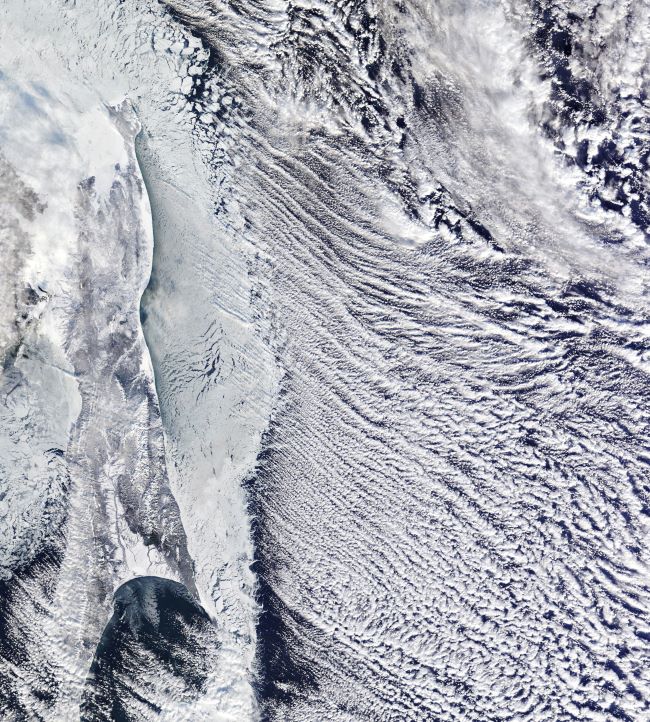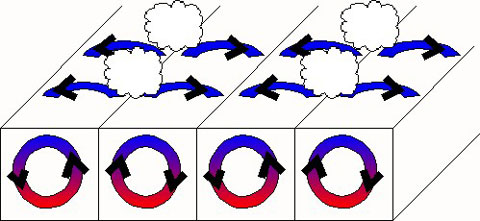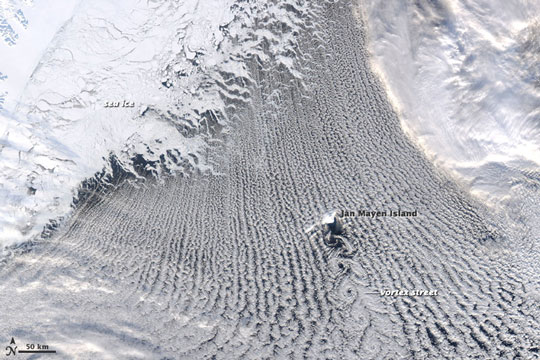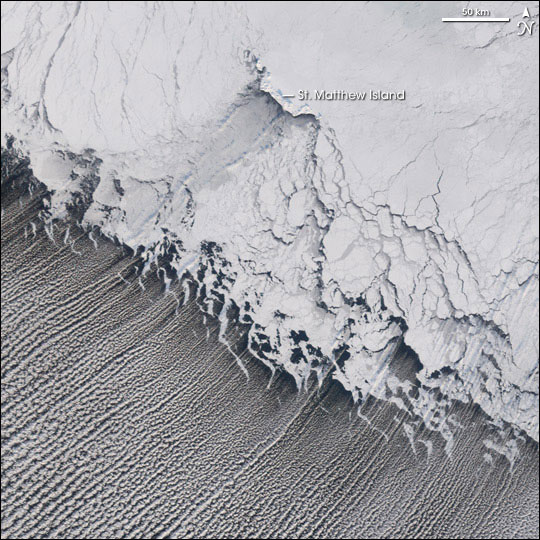
What are cloud streets?
Cloud streets are long rows of cumulus clouds that are oriented parallel to the direction of the wind. Their technical name, more specifically, is horizontal convective rolls. As a matter of fact, you’ve probably seen them in satellite photos. Typically, they most often form straight rows, but when the wind driving the clouds hits an obstacle, the clouds might curl into patterns and become von Kármán vortex streets.

How do cloud streets form?
Convection rolls of rising warm air and sinking cool air form cloud streets. First, rising warm air cools gradually as it ascends into the atmosphere. Then, when moisture in the warm air mass cools and condenses, it forms clouds. Meanwhile, sinking cool air on either side of the cloud formation zone creates a cloud-free area. Later, when several of these alternating rising and sinking air masses align with the wind, cloud streets develop.

Typically, cloud streets form fairly straight lines over large, flat areas such as the ocean. However, when geological features like islands disrupt the flow of the wind, this disruption can create spiral patterns in the cloud streets. This is similar to the way in which large boulders create downstream eddies in rivers. Notably, the spiral patterns in clouds, called von Kármán vortex streets, were named after Theodore von Kármán, a co-founder of NASA’s Jet Propulsion Laboratory. He was one of the first scientists to describe this type of atmospheric phenomenon.
Meteorological phenomena such as cloud streets and von Kármán vortices are a manifestation of Earth’s atmosphere in motion.
The view from above
NASA has taken some amazing photographs of cloud streets over the past few years with MODIS on board the Terra and Aqua satellites. The satellite images on this page are from these instruments.




Bottom line: Cloud streets are long rows of cumulus clouds oriented parallel to the direction of the wind. See images of cloud streets here.
The post Cloud streets: What are they? How do they form? first appeared on EarthSky.
0 Commentaires